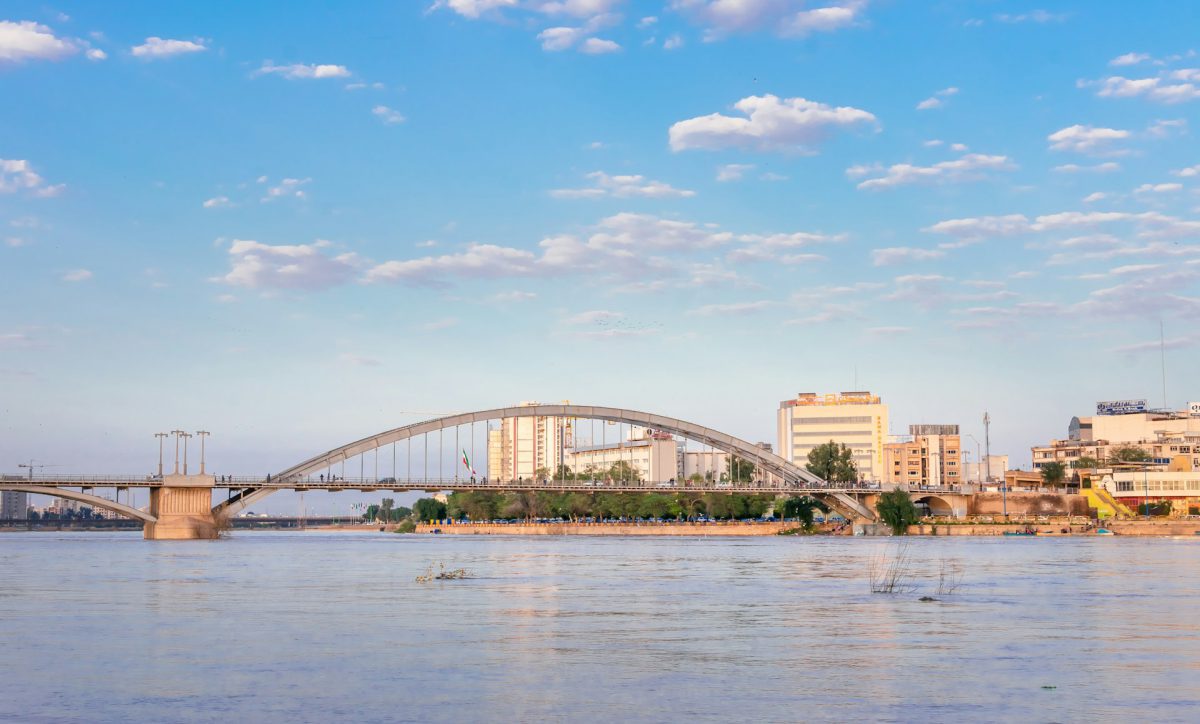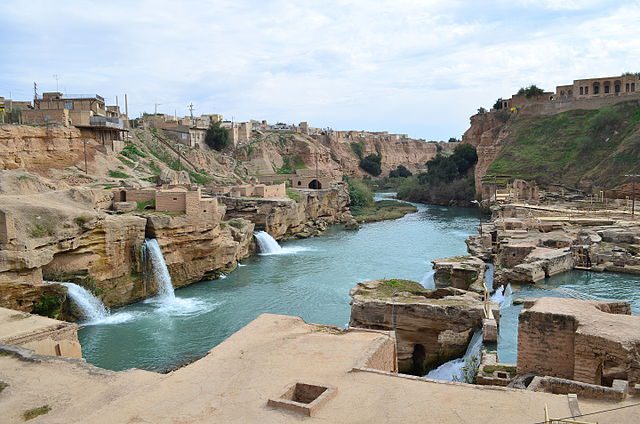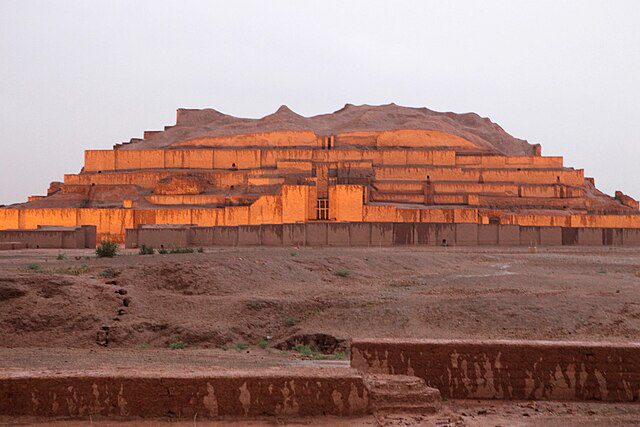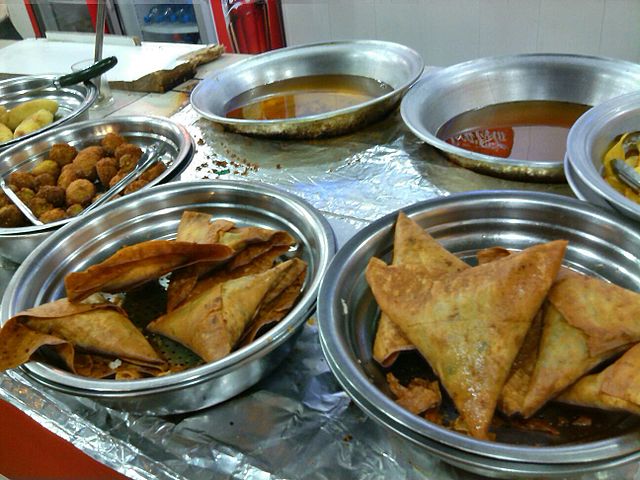Table of Contents
Ahvaz in a Glance
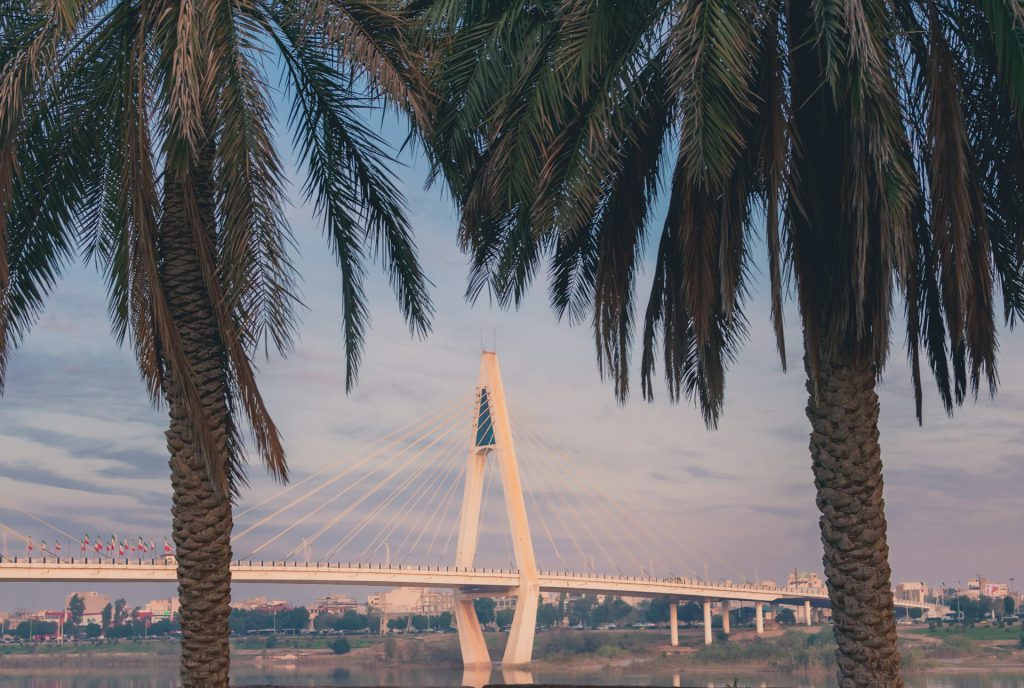
Ahvaz, the capital of Khuzestan Province in Iran, is a bustling city ranked fourth in size after Tehran, Mashhad, and Tabriz. The famous Karun River, flowing from the Bakhtiari Mountains, splits the city into east and west, adding to the city’s beauty. It’s a vital hub connecting cities like Abadan, Khoramshahr, Imam Khomeini, and Mahshahr. the city is crucial for Iran’s oil supply, and it has been home to different communities, including Arabs, Bakhtiari people, and Jewish residents. Most people in Khuzestan province call here home.
Ahvaz Iran is like a cultural mosaic, with a history that welcomed Arabs, Bakhtiari people, and Jewish communities. Its streets tell stories of diverse traditions and histories. Apart from its mix of people, the city is the main residence for the majority of Khuzestan Province’s population. The city is a blend of the past and present, inviting visitors to explore Iran’s rich heritage through its vibrant streets and diverse identities. It isn’t just a city; it’s a journey through time and culture.
History of Ahvaz
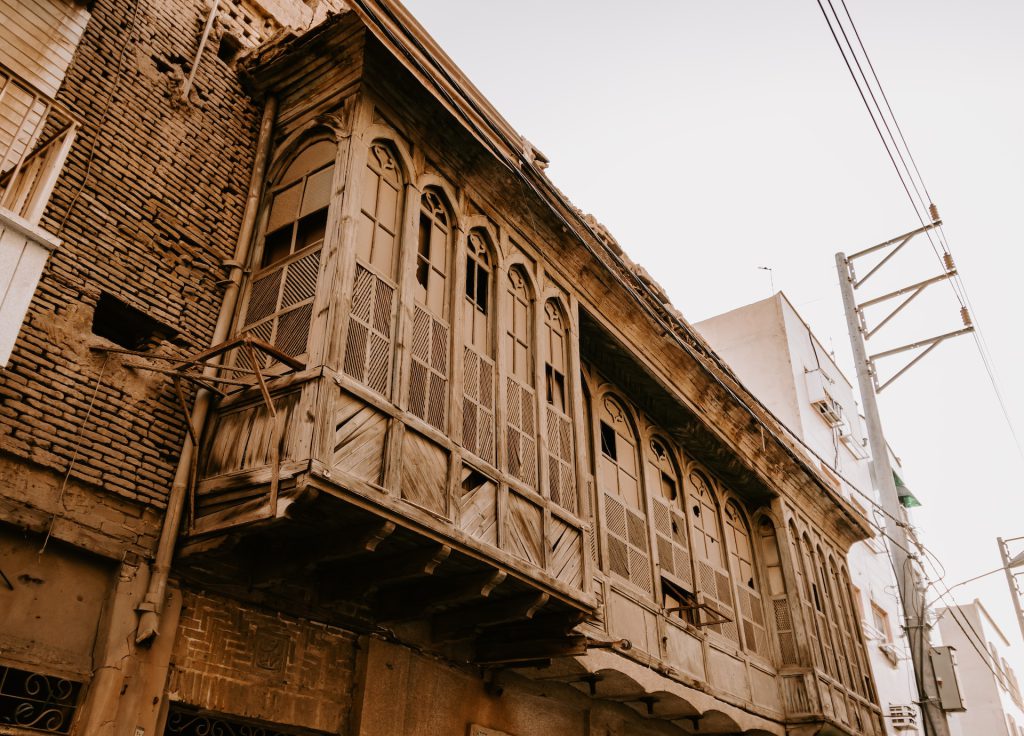
Khuzestan, with its rivers and fertile lands, holds a history spanning over ten thousand years. Around 5 thousand years ago, people started using written language. The Elamite government, more than six thousand years ago, made Susa its capital, marking a significant chapter in Khuzestan’s story. As the Achaemenid Empire took shape, Khuzestan continued to be important. Ahvaz, then called Hooj, was recognized as Khouz by Darius the Great, a term referring to sugarcane fields.
During the Sassanid period, the city thrived as a hub for making textiles and a bustling commercial center. Positioned on the Karun River, Ahvaz facilitated trade. It even served as the capital during the rule of Ardavan IV. However, the war between Artaxerxes and Ardavan VI brought damages to the city, leading to the establishment of two new cities. Dams built during this era boosted farming, but by the sixth century, this city faced challenges. Dam deterioration, local conflicts, and diseases led to its decline.
The construction of the Suez Canal renewed interest in the region, boosting trade on the Karun River. Nasereddin Shah took advantage, creating the Naseri port of the city for foreign trade. Despite name changes over time, from Naserieh to Ahvaz, the city remains a living testament to a rich history that has stood the test of time.
Ahvaz Geological Characteristics
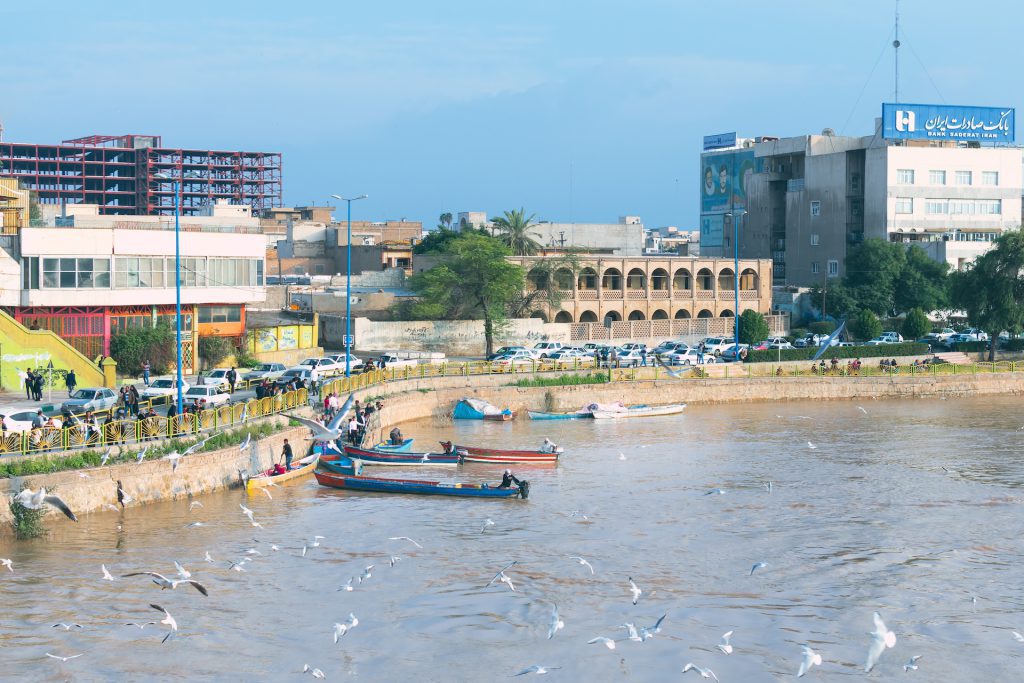
Situated within the vast expanse of the Khuzestan plain, Ahvaz stands at an elevation of 18 meters above sea level. The city’s geography is defined by the prevalence of alluvial and sedimentary rocks, encompassing both chemical and detrital origins. This distinctive landscape contributes to the unique character of this city, where the convergence of plains and elevation paints a canvas of natural diversity.
Ahvaz Weather/Climate
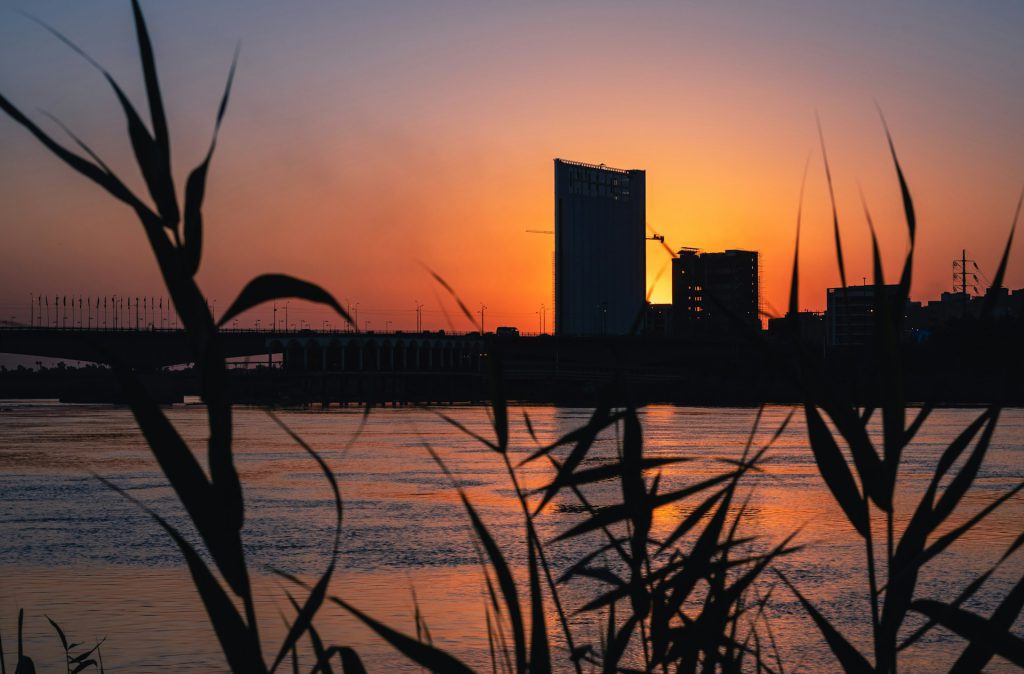
Ahvaz has a hot and humid climate, making it a unique spot on the map. The city is surrounded by flat, fertile plains to the north and center, dunes on the east and west, and the dry Maron plain to the south and southeast, which happens to be a significant source of gas and oil. The city finds itself in one of Iran’s hottest areas, mainly because there’s not much greenery around to cool things down. The weather here is a blend of warmth and dryness, giving the city a distinct character shaped by its natural surroundings.
Top Places to See in Ahvaz
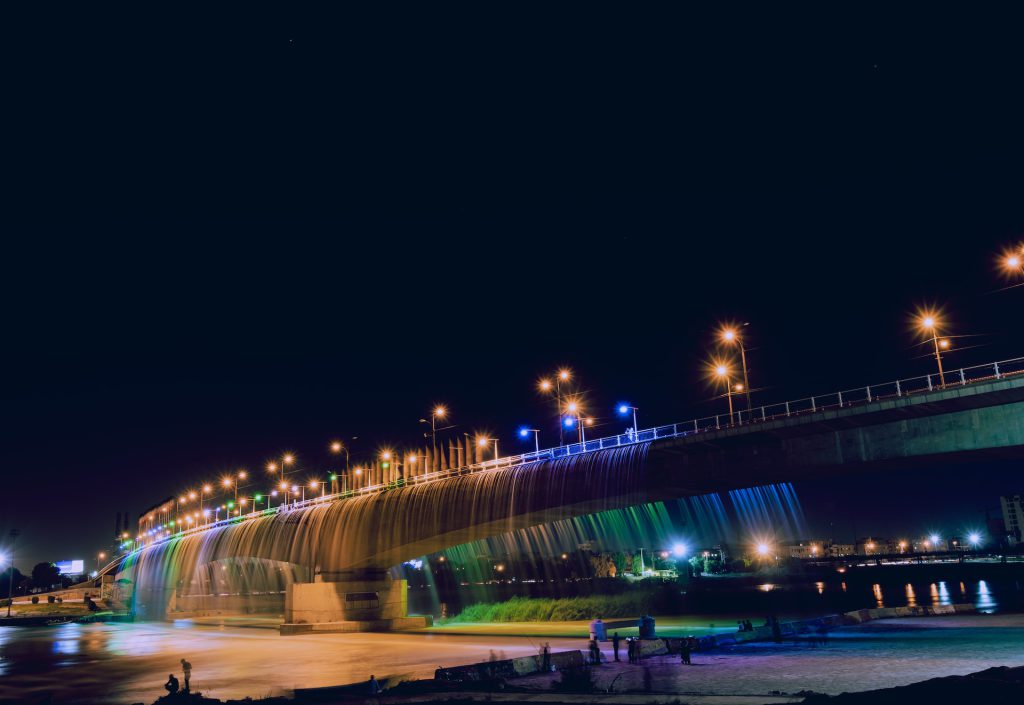
Karun River
Flowing through Ahvaz, the Karun River is Iran’s biggest and wettest waterway. It’s an ancient lifeline, nurturing the first human settlements and stretching 950 kilometers within Iran. More than just a water source, it’s a vital part of Ahvaz’s life, supplying drinking water, creating recreation spots, and supporting local businesses. The eight bridges over Karun not only connect the city but also tell the story of the city’s growth, blending nature with urban development.
White Bridge
Built above the Karun River, the White Bridge in Ahvaz, Iran, has been an iconic presence since its completion on September 21, 1936. This arch bridge, inaugurated on November 6, 1936, has not only connected the city but also etched itself into Ahvaz’s identity. Today, it stands as more than just a structure but a living symbol of the city’s past and present.
Stepping onto the White Bridge is like stepping into Ahvaz’s history. Each stone and arch tell stories of the past, weaving a connection between the city and the Karun River. As the sun sets, the bridge transforms into a silent storyteller, inviting everyone to be part of Ahvaz’s unfolding tale. It’s not just a bridge; it’s a piece of living history, reflecting in the waters of the Karun.
Black Bridge
In Ahvaz, bridges mean more than just connections—they tell stories of toughness and beauty. The Black Bridge, built for trains, isn’t just about crossing rivers; it’s a sign of progress and moving forward. On the other side, the Suspension Bridge, made by a German family, shows how strong people can be.
Even when things got hard, the builder’s widow finished the bridge using simple tools. It’s not just about building bridges; it’s about showing that people can face tough times and still create something beautiful that stands tall in Ahvaz.
Seventh Bridge
Ahvaz’s Seventh Bridge, stretching 490 meters and boasting the Middle East’s longest artificial waterfall, transforms into a mesmerizing spectacle as night falls. This architectural wonder is not just about length; it’s a dazzling display of lights and water that captivates the city.
In every shimmering cascade, the bridge becomes a radiant emblem of the city’s unique blend of history, engineering brilliance, and aesthetic charm.
Abdulhamid Bazaar
Abdulhamid Bazaar proudly holds the title of Ahvaz’s oldest market, with a history stretching back more than a hundred years. Back in the days of the Qajar rule, this market was a big hit among the people of Ahvaz and a prime shopping spot for folks in the southern part of the country. What makes Abdulhamid Bazaar special is that it’s not just a place to shop; it also houses an old courthouse. This courthouse, built by Sheikh Khazal back in the Qajar era, was recognized as a national monument in 2002 under the number 9764.
The market isn’t just a shopping spot; it’s like a time machine taking you back. And it’s not just any market; it got a special mention in the national works list in 1382 AH, showing it’s not just about buying and selling; it’s a piece of Ahvaz’s history you can walk through.
Shopping and the Best Souvenirs to Buy: Ahvaz Travel Guide
Ahvaz has some cool stuff to take home, like yummy dates and pastries. The markets in the city are full of these sweet treats. Ahvazi dates are super tasty, with kinds like Medjool and Deglet Noor. They’re not just delicious; they also mean something special to the people here. And don’t forget to try the date pastries – they’re like a party in your mouth, mixing sweetness with tradition. So, when you’re strolling through the market lanes, grab some of these goodies to bring a bit of the city’s flavor back home with you.
The city has this cool thing where you can buy their traditional clothes. These outfits are like a colorful history book you can wear! The women’s dresses and accessories are all decked out with fancy patterns and bright colors, uniquely telling the story of the city.
Grabbing one of these outfits isn’t just about getting a souvenir; it’s like taking a piece of the city’s spirit with you. You’re not just watching from the sidelines – you’re jumping into the awesome history of this city.
Nightlife in Ahvaz
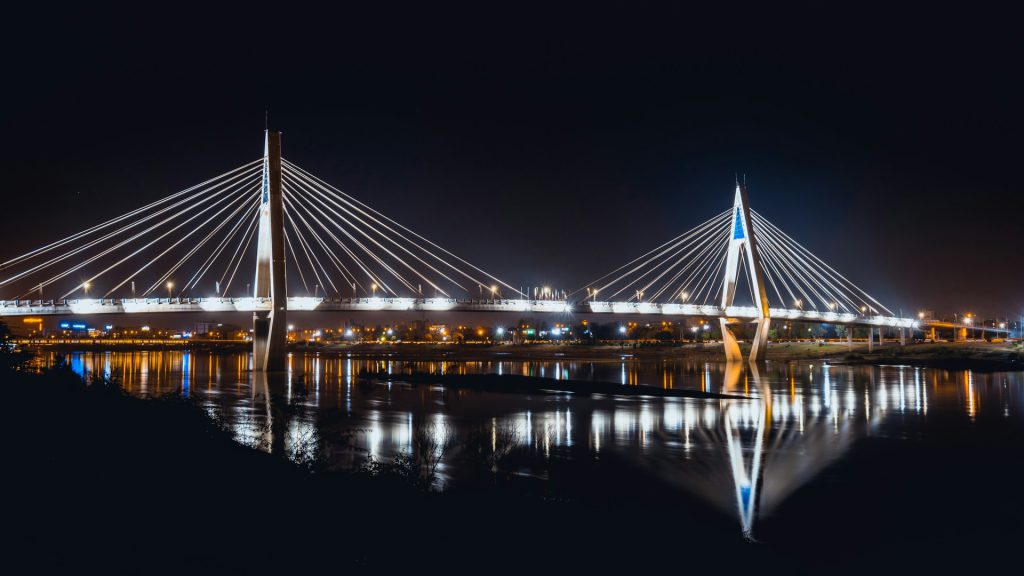
As the sun sets in Ahvaz, the city undergoes a cool makeover, especially for folks who prefer late nights to early mornings. If you’re the type who comes alive when the stars are out, the city has got your back. During the day, it’s pretty quiet and hot, but as the night falls, it transforms into a lively hub of activity. Whether you’re into the hustle and bustle of markets or just want to chill by the Karun River, the city is the place to be after sunset. The weather cools down, and the city lights up, offering a whole new world for those who love exploring after dark.
Ahvaz is like a different city when the sun goes down. It’s not just about the cool evening breeze or the sparkling lights – there’s something magical about the nighttime here. If you’re someone who enjoys the quiet charm of the moonlit hours, this city is the spot for you. The city, which might seem sleepy during the day, wakes up at night with the sounds of people chatting, music playing, and the general buzz of nighttime fun. From lively markets to peaceful moments by the lit-up river, the city offers a unique nightlife experience. So, if you’re up for a night adventure, Ahvaz is ready to show you a good time under the moonlight.
Ahvaz Suburbs
Shushtar Historical Hydraulic System
In the outskirts of Shoushtar lies the fascinating Shushtar Historical Hydraulic System, an assembly of thirteen handcrafted wonders dating back to the Achaemenid and Sasanid periods. Recognized as a UNESCO World Heritage Site in 2009 during the 33rd UN summit, this collection includes impressive bridges, carefully designed mills, robust dams, enchanting waterfalls, intricate channels, and colossal tunnels. Each structure stands as a testament to the ingenious engineering skills of ancient civilizations, showcasing a sophisticated hydraulic system that once sustained a thriving community.
As you explore the archaeological wonders of Shushtar, each monument narrates a unique story, blending the ingenuity of the past with the echoes of ancient civilizations. From the rhythmic sounds of waterwheels in the mills to the grandeur of stone bridges spanning the waterways, the Shushtar Historical Hydraulic System represents the enduring spirit of human creativity and adaptability. Journeying through this UNESCO gem feels like stepping into a living history book, where the convergence of art and engineering vividly illustrates the challenges overcome by our ancestors to harness the power of water for the prosperity of their society.
Dez National Park
Dez National Park is like a nature hotspot in Iran, found in Khuzestan province near Shush city. It’s pretty big, covering about 17,895 hectares and spreading across Shush, Shushtar, Dezful, and Ahvaz cities. Picture it like a puzzle, connecting to Haft Tepe in the north, Shushtar in the east, and Hossein Abad Shush in the west. In 2009, a chunk of this large area, about 5,301 hectares (mostly in Shush city), got the special title of a national park.
If you’re on the Ahvaz-Shush road, you can reach Dez National Park just 20 kilometers to the east. It’s surrounded by the Dez protected area to the north and south. This place is a haven for nature lovers and those who care about keeping our environment safe and sound.
Chogha Zanbil Ziggurat
Travel back in time at Chogha Zanbil, an ancient worship site built around 1250 BC in Khuzestan Province. This ziggurat, dedicated to the god Inshushinak, is the first Iranian monument on UNESCO’s World Heritage List. The name, Chogha Zanbil, meaning “hill” and “basket” in the local language, reflects its hillside setting resembling an inverted basket. Despite its original height of 52 meters and five floors, today, 25 meters and two floors remain. This ancient monument invites visitors to connect with Iran’s spiritual roots.
Haft Tepeh
Situated 15 kilometers southeast of Susa, Haft Tepeh unfolds as an archaeological treasure in Khuzestan Province. Comprising 14 hills over 1.5 square kilometers, this complex likely housed the ancient city of Kabnak during the Elamite civilization. Dr. Negahban’s excavation in 1965 revealed temple tombs with 21 or 22 skeletons, uncovering the city’s rich history. The accompanying Haft Tepeh Museum preserves these artifacts, providing a glimpse into the past and showcasing the city’s historical significance.
Towbiroun Valley
Located 20 kilometers east of Dezful, Towbiroun Valley stands out as one of our country’s most captivating natural attractions. Situated in the heart of nature, this spectacular valley has recently become a magnet for tourists and nature lovers alike. Its unique charm and breathtaking scenery have propelled it to the forefront of popular attractions in the southern region of our country.
Towbiroun Valley is a testament to the mesmerizing beauty that nature has to offer, making it a favored destination for those in search of tranquility and stunning landscapes.
How to Get to Ahvaz
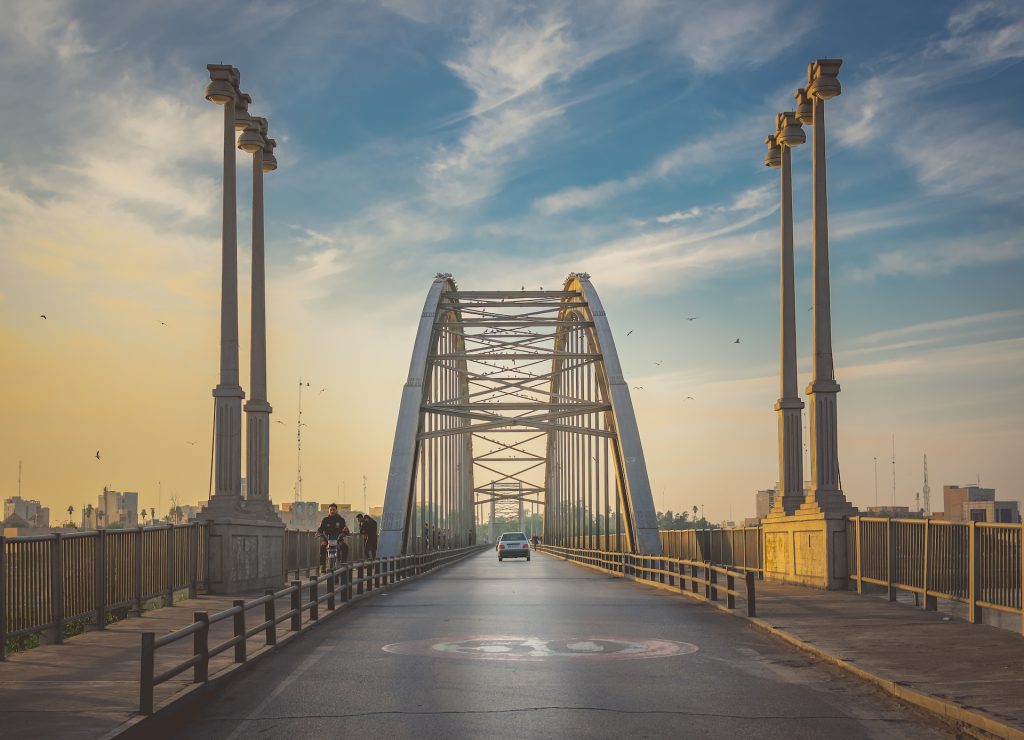
If you want to travel to Ahvaz, here are the accessible ways:
By Bus
The city has good bus links to other cities. You can catch a bus every day to places like Tehran, Mashhad, Shiraz, Isfahan, Kerman, Bushehr, Khorramshahr, Yasouj, and more.
By Train
For a scenic ride, hop on the train from Ahvaz to Tehran, Khorramshahr, or Bandar Imam Khomeini. The city is a major stop for trains coming from the south to Tehran. From there, you can switch trains and head to places like Mashhad or Tabriz. The train journey unfolds the beauty of Iran’s landscapes, offering a charming way to reach this city of bridges.
By Plane
If you prefer flying, Ahvaz International Airport has you covered. There are daily flights to big cities like Tehran, Shiraz, and Isfahan. Once a week, you can even catch a flight to Dubai or Mashhad. Airlines like Iran Air, Mahan, Aseman, Naft, and Caspian operate here, giving you different choices for your journey.
Best Time to Visit Ahvaz
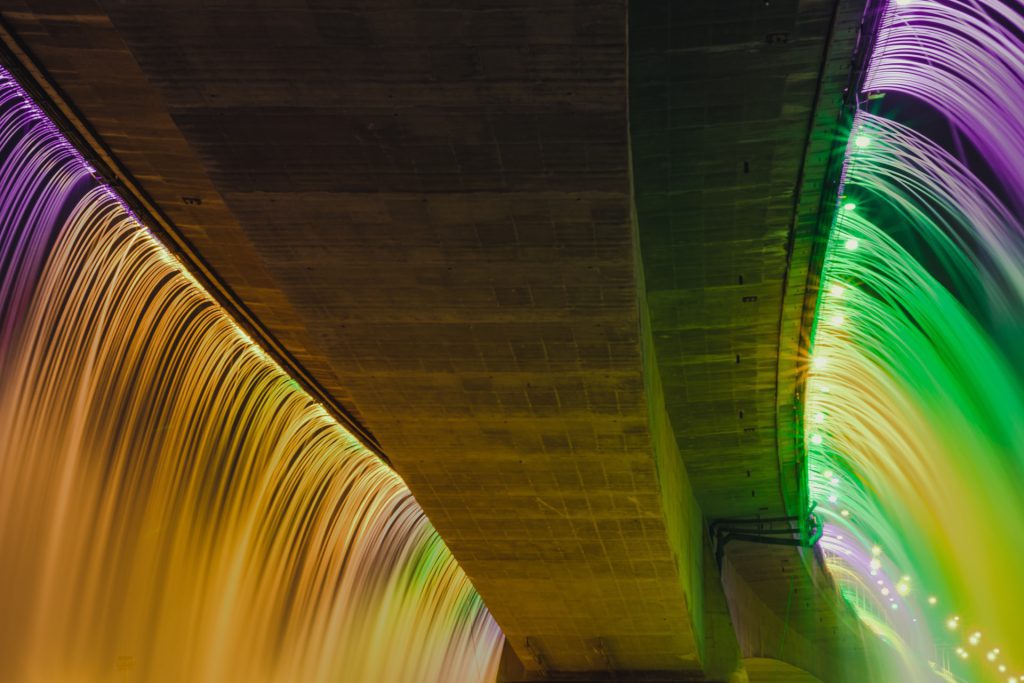
For the best time in Ahvaz, aim for January to April. It’s not too hot or too cold—just right for exploring. January starts cool, giving the city a crisp feel without freezing you. As spring kicks in during March and April, the weather gets even better, with blooming scenes and comfy temperatures. The city shows off its beauty without the extremes.
Prefer warmth without the burn? Choose October to December. The city transitions to milder weather, offering a break from the summer heat. October brings comfortable warmth, and even when the rain starts in November and December, it’s more like a friendly sprinkle. The occasional showers add a nice touch to the city’s vibe, making these months a sweet spot for a mix of sunshine and a refreshing drizzle.
Public Transportation in Ahvaz
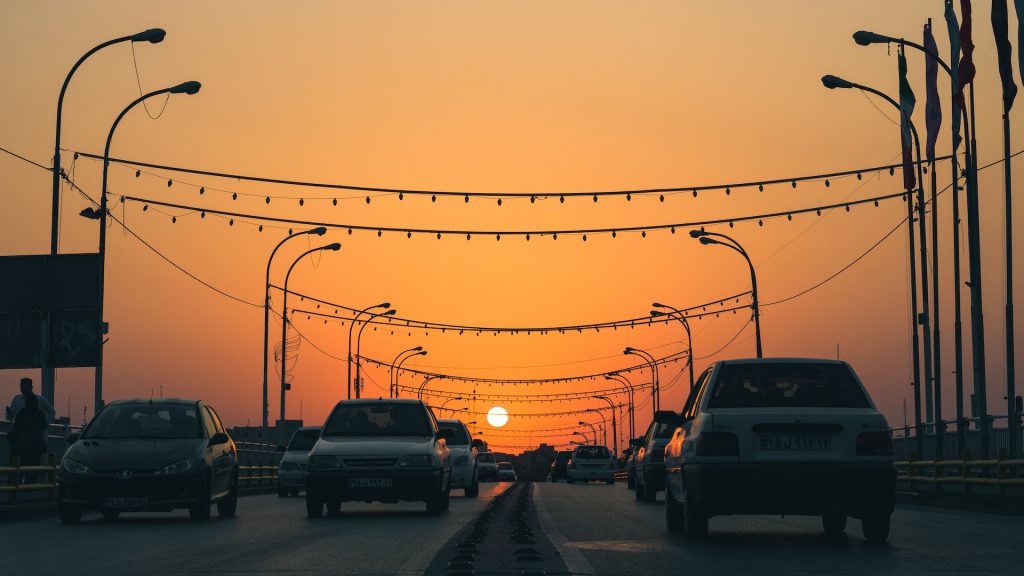
Taxi
In 1377, Ahvaz City Taxi Management and Supervision Organization started helping taxi drivers, covering more and more parts of the city over time. They offer different services, like taxis for Karun Railway and the city center, airport taxis, line taxis, and wireless agencies. Every year, the taxi company shares a price list for their services to keep things clear and accessible for people in the city.
Bus
Back in 1355, “Bat Ford” buses kicked off public transportation in Ahvaz. At first, drivers owned and ran these buses themselves. Later, in 1349, Ahvaz Bus Unit Company started working, making public buses more organized. The bus system has come a long way, linking different parts of the city. The city’s buses are a crucial part of daily life, connecting neighborhoods and making getting around the city easier for everyone.
Subway
Back in 2001, the Ahvaz City Train Organization started, bringing a new way to get around the city. They finished planning the first part of the subway route from northeast to southwest. Construction began, and as people liked it, the subway kept growing. Today, Ahvaz’s subway is still improving. They upgrade by getting rid of old buses, making stations more automatic, and using card-ticket machines. These changes show they’re committed to giving people in Ahvaz a better and more modern way to travel
Best Ahvaz Food
Ahvaz’s Tasty Seasons
Ranginak is a local favorite in Ahvaz, showing up at lunch and dinner tables. It’s a sweet mix of dates, walnuts, and spices, giving a taste of Khuzestan’s food heritage. In the warm summers, guests get cherry and saffron syrups, while in winter bring dates and sesame for a cozy feel.
Qalyeh Mahi is a special fish dish that the native folks love. Grilled fish with tamarind makes a flavorful combo, celebrating the province’s water connections. Everyone, whether in the city or countryside, enjoys a good bowl of broth. It’s a comfy and healthy choice for all. Ahvaz’s food scene has more to offer, like yogurt soup, sesame soup, fish kebabs, shrimp, lentil soup, and hot dates, making sure there’s something tasty for everyone.
Ahvaz’s Fishy Flavors
Ahvaz loves its fish, and Qalyeh Mahi proves it. Grilled fish with tamarind gives you a real taste of the place. But it’s not just about fish; everyone enjoys a good bowl of broth, connecting people across the city and countryside. Beyond that, there’s more to try, like creamy yogurt soup, nutty sesame soup, fish kebabs, shrimp, lentil soup, and sweet hot dates. The food story of this city is simple, tasty, and a mix of tradition and local goodness.
Ahvaz Restaurants

Baq-e Firouzeh
Baq-e Firouzeh, also known as the Turquoise Garden, blends tradition with a modern touch. This restaurant offers a delightful mix of kebabs in a setting that combines old-world charm with contemporary vibes. Every visit to Baq-e Firouzeh is not just a meal; it’s a celebration of Persian culinary heritage, turning each dish into a flavorful masterpiece.
Emperor
Emperor is not just a revolving restaurant; it’s a culinary spectacle. With live music and a menu showcasing Persian dishes, including a tempting seafood selection, Emperor creates an unforgettable dining experience. Step into this carousel of flavors, where every dish tells a story and each rotation unveils a new chapter in Persian gastronomy.
Hedieh
Hedieh, situated in Hedieh Apartment Hotel, is a haven for seafood lovers. This restaurant offers a unique blend of sea-inspired dishes and sizzling kebabs, creating a mouthwatering experience. Beyond just a meal, Hedieh is a journey into the depths of flavors, set against the backdrop of the hotel’s elegant atmosphere.
Moein Garden
Moein Garden Recreational Complex, located by the Karoun River, is a hidden gem for culinary connoisseurs. This restaurant in a pleasant garden serves up a variety of kebabs and seafood dishes, reflecting the beauty of its natural surroundings. It’s not just a dining spot; it’s a tranquil escape where you can savor the best of diverse culinary offerings.
Oxin Hotel’s Restaurant
In Oxin Hotel, discover a culinary blend of local, Persian, and international tastes. The menu caters to diverse palates, offering a mix of familiar and exotic dishes. Oxin Hotel’s Restaurant isn’t just a dining spot; it’s a journey through global flavors, bringing a world of tastes to Ahvaz.
Ahvaz Hotels

Ahvaz Pars Hotel
Ahvaz Pars Hotel welcomes families with open arms, offering cozy rooms and convenient amenities. Located near Nature Bridge, it’s an ideal spot for a comfortable stay. Enjoy free wifi, room service, and a refreshing pool. Venture to nearby Dorehami Cafe and Sahel Cafe for dining options.
Oxin Hotel
Oxin Hotel is perfect for business trips, boasting spotless rooms and courteous staff. Enjoy crisp towels and tidy bathrooms. It’s a haven for business travelers seeking a clean, professional stay.
Soumia Hotel
Stay at Soumia Hotel for a comfy riverside experience. With clean rooms, friendly staff, and a great location, it’s an ideal choice. Connect with good wifi, savor meals at the on-site restaurant, and start your day right with a delicious breakfast.
Hotel Iran
Hotel Iran offers renovated rooms and exceptional staff. Experience genuine care, seen in their generosity during payment challenges and support during unexpected incidents. It’s not just a stay; it’s a warm embrace in the heart of Ahvaz.
Hotel Naderi
For a pleasant night in Ahvaz, consider the 3-star Ahvaz Naderi Hotel. Located on Imam Khomeini Street, it provides easy access to the city’s best attractions. Immerse yourself in the beauty of the city while enjoying a comfortable stay at this welcoming hotel.
Things to Know Before Visiting Ahvaz
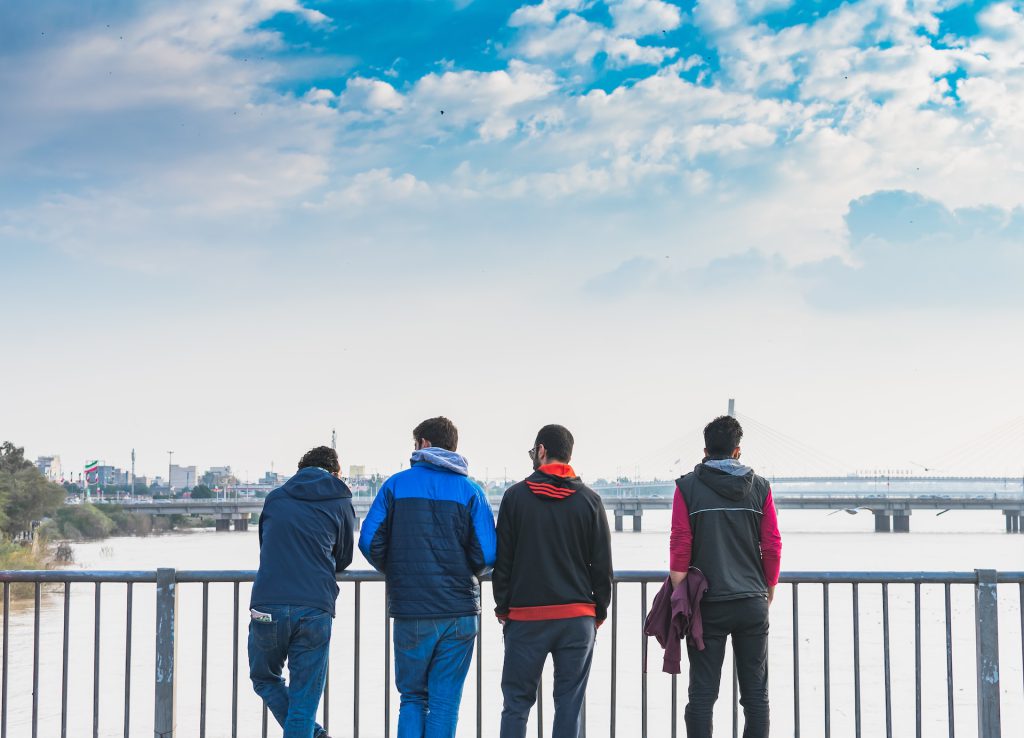
Affordable Ahvaz
Exploring Ahvaz without breaking the bank is entirely possible, thanks to its budget-friendly options. Whether you’re a budget traveler or seeking a bit more comfort, you’ll find accommodation to fit your pocket.
Cheap and cheerful hostels and budget hotels are available for $20-30 per night. If you’re up for a bit more luxury, fancier stays come in at $50-70 per night. Food won’t dent your wallet either, with street eats and local joints offering tasty meals for just $2-5.
If you’re feeling a bit fancier, splurge at high-end restaurants where dishes are around $10-15 per meal. Getting around is easy on your pocket too, with buses and taxis costing just a few cents. Want your own wheels? Renting a private car is an option, averaging $30-40 per day.
Safety Tips for a Smooth Stay
Ahvaz not only offers budget-friendly fun but is also known for its safety. While it’s always smart to stay cautious in any city, Ahvaz stands out for its overall safety. The locals are friendly and add a warm touch to your visit. Keep things safe by following some common-sense advice: avoid wandering alone at night, stay aware of your surroundings, and keep your belongings secure. Respecting local customs, like dressing modestly, helps you blend in seamlessly.
FAQs about Ahvaz
Q1: Do they speak Arabic in Ahvaz?
A1: People in the region speak Persian and Arabic, as well as Luri (Bakhtiari) and various Persian dialects like Dezfuli, Shushtari, and others. Ahvaz has a population of around 1,184,788, and when you include the nearby town of Sheybani, the total population in the urban area is over 1.2 million.
Q2: Was Ahvaz part of Iraq?
A2: In the past, the Ahwaz region had stronger connections with Iraq than with Iran. Following the Muslim triumph over the Persian Empire in the Battle of al-Qadisiyyah in 636 AD, Ahwaz became part of the Basra state and remained so until the Mongol invasion in 1258.
Q3: What state is Ahvaz in?
A3: It is the capital city of Khuzestan province in southwestern Iran.
Q4: How many Arabs are in Ahwaz?
A4: Al Ahwaz has a population ranging from 8 to 10 million people. They are ethnic Arabs who have faced nearly a century of systematic persecution and cultural discrimination under the rule of the Shahs and the Ayatollahs.
Q5: Was Iraq a Persian country?
A5: From around 600 to 1055, Iraq was part of the Persian Sasanian Empire. In the year 600, Iraq was a province of this empire, and it had been under Persian rule for three hundred years.
Last Words: Experience the Best of Ahvaz with a Customized Tour
Ahvaz is a big city in Iran, the capital of Khuzestan Province. It’s fourth in size after Tehran, Mashhad, and Tabriz. The Karun River splits the city into east and west. The city is crucial for Iran’s oil and has diverse communities like Arabs, Bakhtiari people, and Jews. It’s a mix of cultures with a rich history, inviting visitors to explore Iran’s heritage through its lively streets.
Embarking on a journey to Iran is an enchanting venture, and discovering the hidden gems of Ahvaz adds an extra layer of cultural richness to the experience. Enter To Iran Tour, your gateway to a bespoke Iranian adventure. We specialize in crafting Iran Tours that go beyond the conventional, designed to resonate with your tastes and interests.
Embark on an adventure like no other – choose To Iran Tour for Customized Tours that transform your travel dreams into reality.

